Saving Salmon: California Orders New Water Restrictions
Restrictions target big Sacramento River reservoir and Russian River residents, but effects will ripple through the state.
By Brett Walton
Circle of Blue
The Delta smelt, a tiny fish, steals most of the attention in the war of words over water use and environmental goals in California. But other species play a role, too. This week, state and federal agencies ordered water restrictions for two northern California watersheds in order to guard the health of endangered salmon.
One order will restrict reservoir releases into the Sacramento River from Shasta Lake, the state’s largest reservoir and a key cog in the federal Central Valley Project, a network of dams and canals that moves water to Central Valley farms and Bay Area cities.
“Each time we talk I think it can’t get more difficult, and then it does.”
–Chuck Bonham, director
California Department of Fish and Wildlife
The second order bans lawn watering, car washing, and other household practices for approximately 13,000 landowners on four tributaries of the Russian River near Napa Valley. Both actions, which still require approval from various state agencies, seek to keep rivers flowing with enough cold water to prevent cooking the salmon when they return from the Pacific Ocean this summer to spawn.
The latest round of restrictions is emblematic of the tremendous pressure that is building on the state’s meager water supplies, even in the early days of what will be a hot, dry, painful, and challenging summer. Every week brings a fresh set of unsavory pronouncements from California water regulators as they attempt to manage the drought emergency. Last week, regulators began cutting off water to the oldest — and seemingly most secure — water rights, an action not taken in nearly 40 years.
“Each time we talk I think it can’t get more difficult, and then it does,” said Chuck Bonham, director of the California Department of Fish and Wildlife, during a conference call with reporters.
The Shasta Lake restrictions, because they target an important reservoir, will have a cascading, yet uncertain, effect throughout the state, officials acknowledged. Less water will be delivered to farms and cities during the summer and more water from state-operated reservoirs may be needed to force salt water out of the Sacramento-San Joaquin Delta.
“Now more than ever we need creative plans — exchanges or transfers of water between users,” said Mark Cowin, director of the California Department of Water Resources, talking about tactics for enduring the summer.
Keeping the Sacramento River Cool
On June 16, state and federal officials from a half dozen agencies, including the Bureau of Reclamation and the California Department of Water Resources, announced that there is 30 percent less cold water stored in Shasta Lake than they had thought in May. The miscalculation was due to faulty measurements from a temperature probe.
This is bad news for salmon, which require river temperatures below 15.5 degrees Celsius (60 degrees Fahrenheit) to survive. Nearly all the Sacramento River winter-run Chinook salmon, which return to the watershed in the summer, died last year when the pool of cold water in the depths of Shasta Lake ran out and the river reached that life-and-death temperature threshold.
Fisheries managers feel that a second consecutive die-off would threaten the survival of the species, which was listed as endangered under the federal Endangered Species Act in 1994. Spawning grounds for this segment of Chinook salmon cover 70 kilometers (44 miles) of the Sacramento River below Keswick Dam. Cold water released from Shasta, just upstream of Keswick, keeps this stretch of river a viable location to lay eggs.
To keep as much cold water in storage as possible, the Bureau of Reclamation will revise its temperature management plan for the Sacramento River. It will reduce releases from Shasta Lake by 15 percent compared to the plan that was submitted in the spring, before the inaccurate temperature readings were discovered. Reclamation will attempt to keep river temperatures at 57 degrees, up a degree from the earlier version. The normal target of 56 degrees is not possible with so little cold water left in the lake, which is currently half full and warming quickly.
Water managers will manage the system dynamically, making operational changes weekly or daily as conditions shift, according to Will Stelle, West Coast region administrator of NOAA Fisheries, an office of the National Oceanic and Atmospheric Administration.
Fish and wildlife officials were already moving millions of young salmon in the Sacramento River downstream by truck earlier this spring, bypassing a perilous outbound journey to the Pacific through warm, depleted streams. The first five months of 2015 were the hottest such period in California in 121 years of record keeping. The winter snowpack was also the lowest on record.
The California Department of Water Resources attempted to preserve cold water in Shasta by building a temporary dam in the Sacramento-San Joaquin Delta in May that will stay in place until November. The rock barrier across West False Creek is designed to keep salt water from creeping into the delta and to preserve storage in Shasta Lake. Without the barrier, officials say, more fresh water from Shasta would be required to repel the salt water, which kills endangered Delta smelt and fouls water supplies for irrigation and municipal use.
Additional Water Restrictions for the Russian River
The measures in the Russian River watershed will be more local. The State Water Resources Control Board announced on June 17 new water restrictions for approximately 13,000 residents who live along four tributaries, where endangered coho salmon and steelhead trout spawn.
Residents, most of whom supply their own water, either from wells or direct withdrawals from streams, are required to report water-use data to the state. They are prohibited from watering lawns, washing cars, and filling decorative fountains. Trees and gardens can be watered twice a week. Penalties of up to $US 500 are possible for those who do not comply.
Commercial farms face no restrictions, for economic reasons, according to the State Water Board.
“The feeling is, it’s not a great deal of water that is needed to get to where we want to go. So rather than cut off commercial operations that create jobs, we go after ornamental ponds and similar uses,” Tim Moran, State Water Board spokesman, told Circle of Blue.
The order links groundwater and stream flows, meaning that even well owners, who are exempt from regulation in most of the state, will be required to pump less water. The State Water Board also made this connection between groundwater use and stream flows in the Russian River in a 2011 regulation that targeted vineyards.
The emergency order will come into effect on July 3 if it is approved by the Office of Administrative Law.
The Shasta Lake gambit, meanwhile, must be reviewed by at least four state and federal agencies. The State Water Board will hold a hearing on June 24 to gather information on the new plan.
Brett writes about agriculture, energy, infrastructure, and the politics and economics of water in the United States. He also writes the Federal Water Tap, Circle of Blue’s weekly digest of U.S. government water news. He is the winner of two Society of Environmental Journalists reporting awards, one of the top honors in American environmental journalism: first place for explanatory reporting for a series on septic system pollution in the United States(2016) and third place for beat reporting in a small market (2014). He received the Sierra Club’s Distinguished Service Award in 2018. Brett lives in Seattle, where he hikes the mountains and bakes pies. Contact Brett Walton

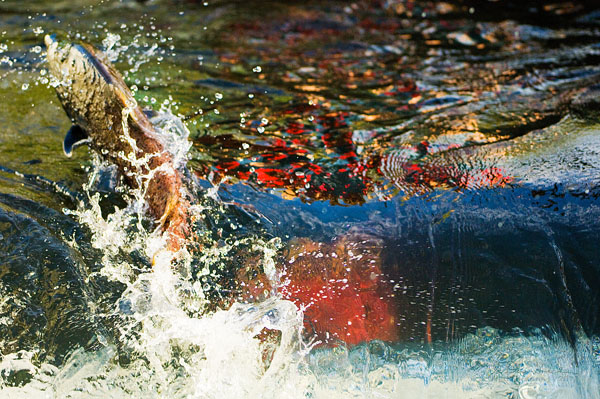

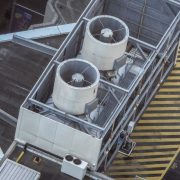
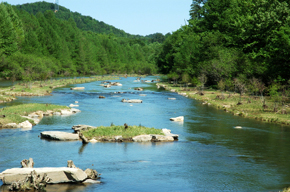


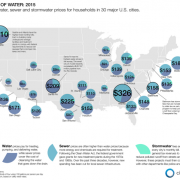
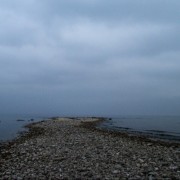

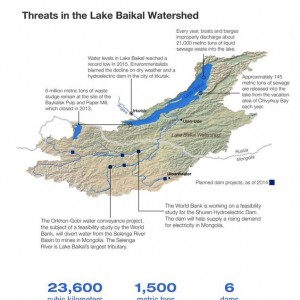

Oil Refineries use 94 million Gallons of Drinkable Water a Day.
“California is the third largest refiner of oil in the nation, after Texas and North Dakota, and the state doesn’t keep stats on how much water the refineries use.
Mother Jones investigated, asking the six companies that make up 90 percent of the state’s refining capacity, to share their figures.
Although three declined to comment, the data released by the other three provided enough of a baseline to extrapolate that, at full capacity, oil refineries use 94 million gallons of water per day in California.
As Mother Jones reports, that’s more than twice as much as the daily water use of San Francisco homes. Just let that sink in for a while.” Cat Di Stasio
Fracking used over 70 million Gallons of Drinkable Water last Year in California.
Fracking Poisons Water
Fracking Causes Earth Quakes
Fracking Releases Huge amounts of Methane, a Green House Gas, that is Warming our Earth. along with another Green House Gas Carbon
“SAN JOSE — Gov. Jerry Brown on Friday said he won’t back down on his threat to fine cities, water districts and private water companies $10,000 a day if they fail to meet strict water conservation targets during California’s relentless drought.” Paul Roberts
“”You didn’t expect me to offer bluster as a solution?” he said. “Yes, we are serious.” Gov. Brown
Seriously, you would spread the solution to effect all sectors of Water Usage, Closing the 108 Bottle Watering Facilities in the State, until the Drought is Gone, would be Huge, and a Ban on Fracking should of been one of your first options, since it is Poisoning Our Water.
California emitted 459 Toxic Tons of Carbon Dioxide in 2014.
Gov Browns call to reduce this to 1990 levels so we can continue to emit over 400 million Toxic Tons a year, will not help us stop or slow down Global Warming and Sea Levels Rising.
“Updates to the 2020 Limit.
Calculation of the original 1990 limit approved in 2007 was revised using the scientifically updated IPCC 2007 fourth assessment report (AR4) global warming potentials, to 431 MMTCO2e. Thus the 2020 GHG emissions limit established in response to AB 32 is now slightly higher than the 427 MMTCO2e in the initial Scoping Plan.” Ca. Gov. Data
We Need 100% Renewable Energies .
Implement a California Residential and Commercial Feed in Tariff.
California Residential Feed in Tariff would allow homeowners to sell their Renewable Energy to the utility, protecting our communities from Poison Water, Grid Failures, Natural Disasters, Toxic Natural Gas and Oil Fracking.
A California Commercial FiT in Los Angeles, Palo Alto, an Sacramento Ca. are operating NOW, paying the Business Person 17 cents cents per kilowatt hour.
Sign and Share this petition for a California Residential Feed in Tariff.
http://signon.org/sign/let-california-home-owners